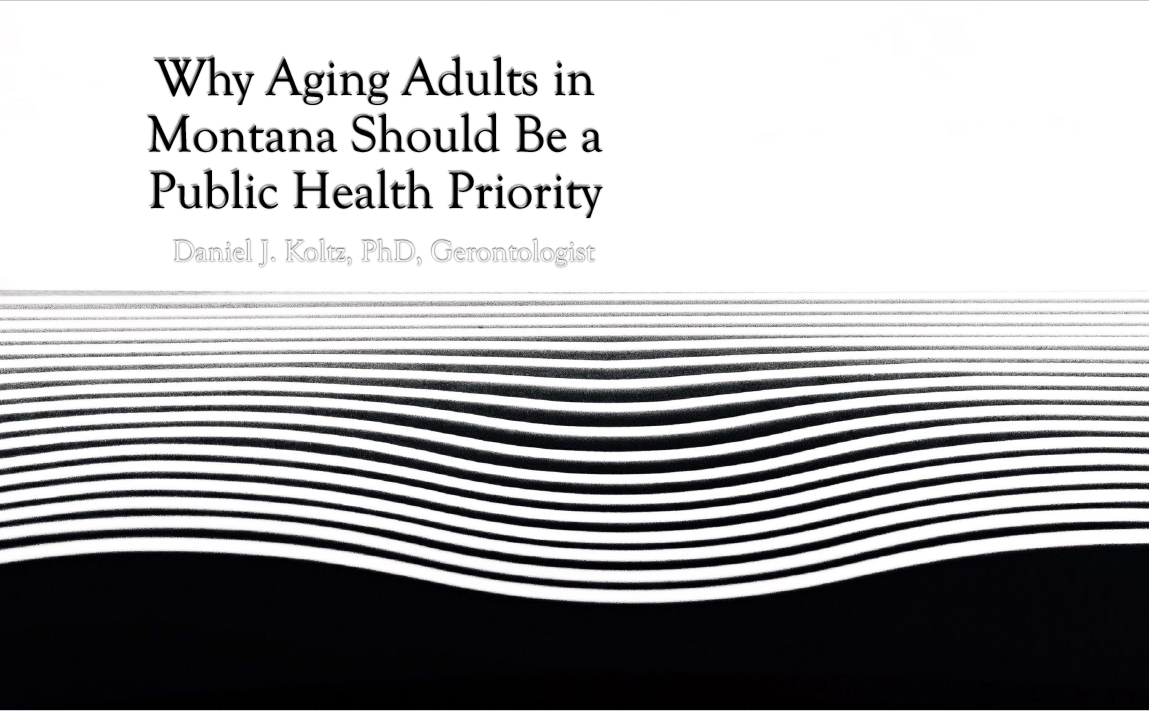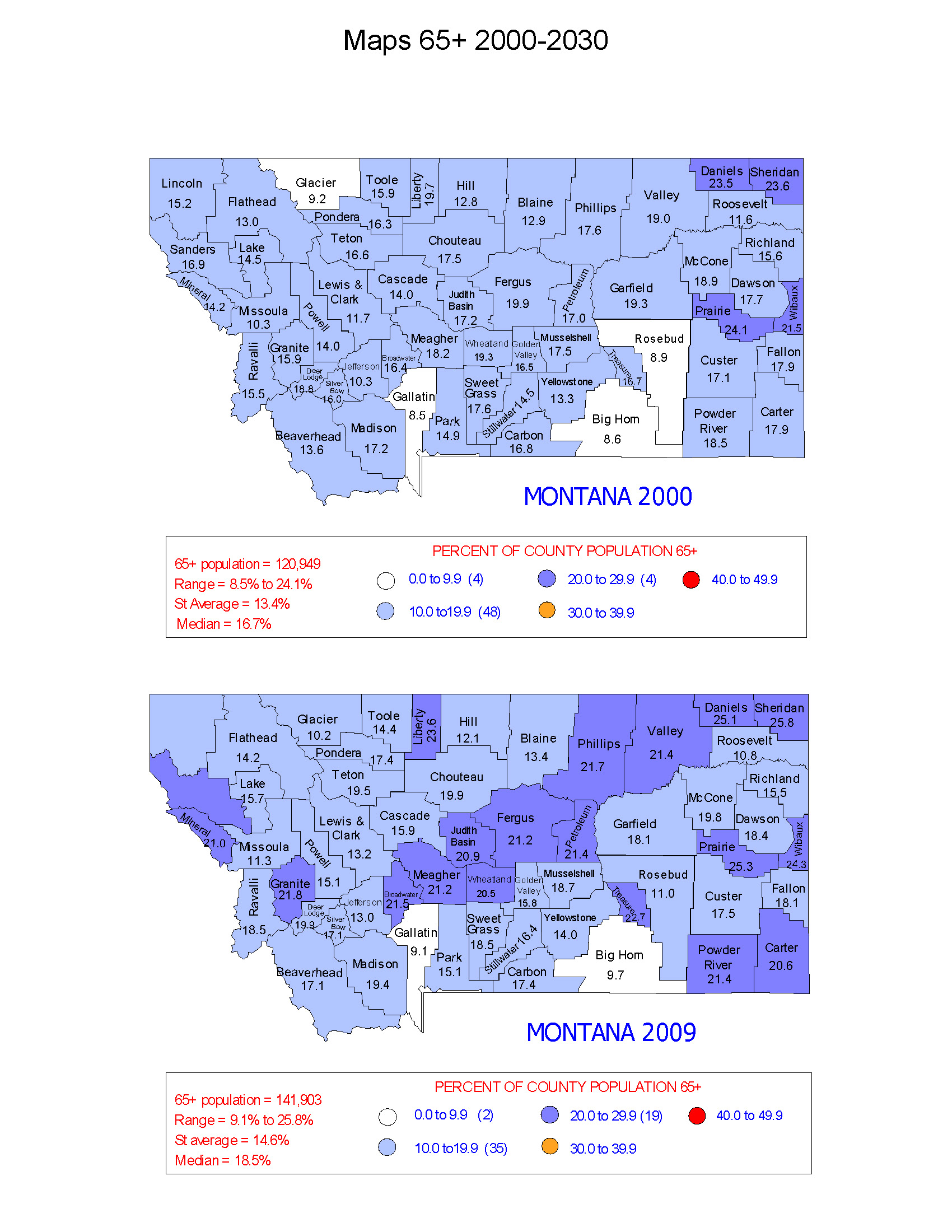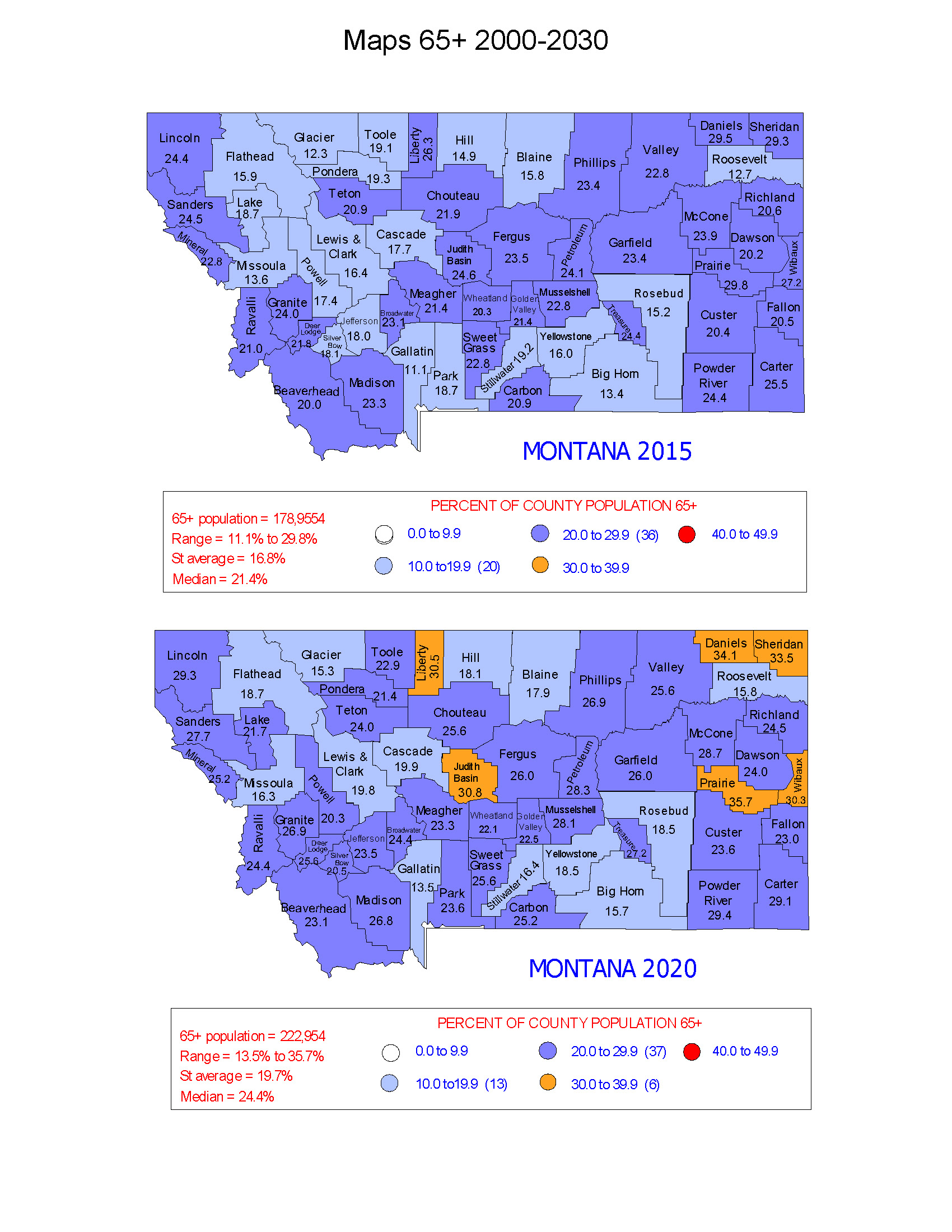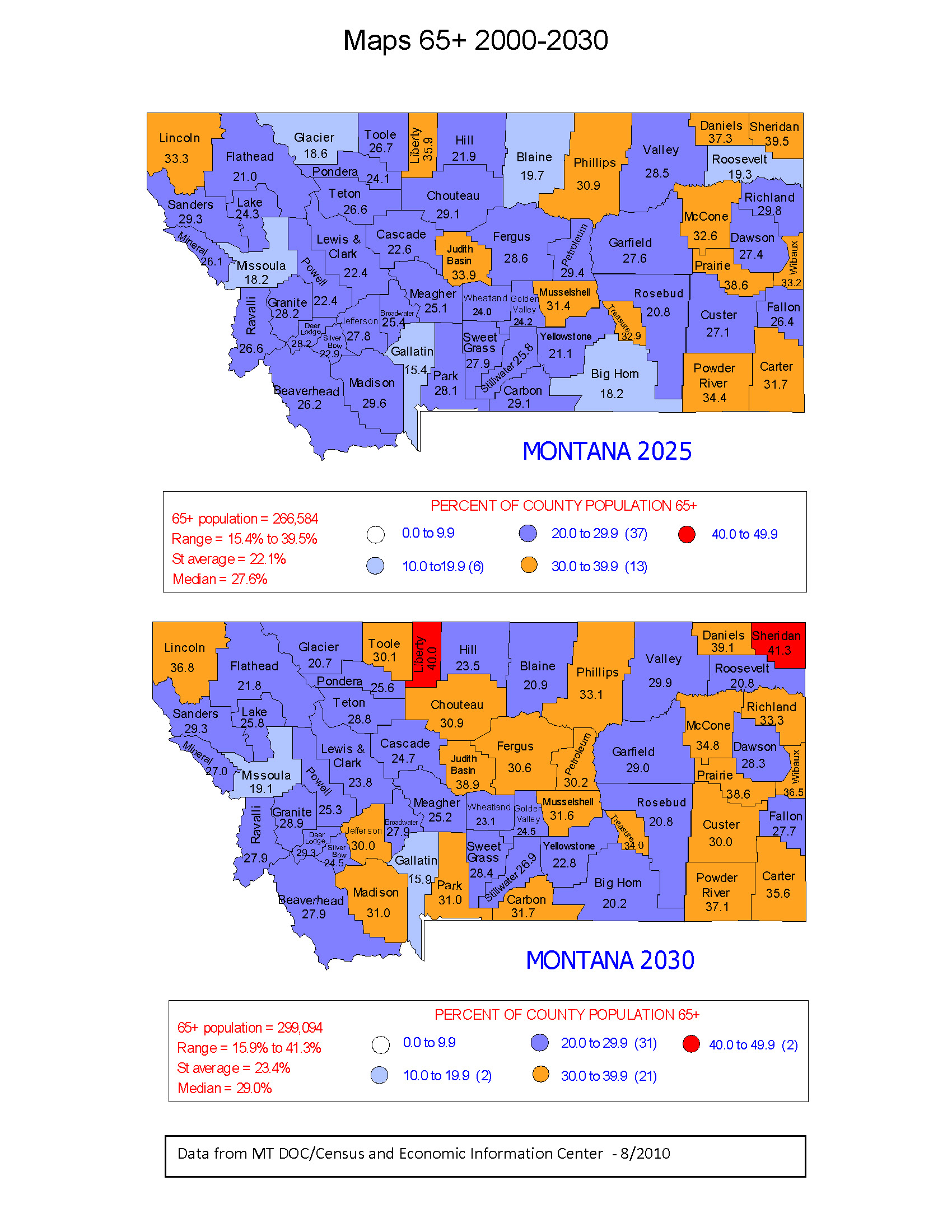The State of Aging in Montana
Why Aging Adults in Montana Should Be a Public Health Priority
Daniel J. Koltz, PhD, Gerontologist

View, Print or Download Dr. Koltzs' PowerPoint presentation
Montana’s Aging Population
Use this link to view maps on MT DPHHS website



What happens when we age?
What is our bodies response to Aging?
- Inflammation becomes more predominant as our bodies get older or worn out.
- Wear and Tear Theory of Aging – progressive damage to our bodies, once they wear out they do not function properly (Stibich, 2020).
What is Inflammation?
A process by which your body’s white blood cells and the things they make protect you from infection from outside invaders. When your body is not fighting disease or illness, it will trigger pain in areas of weakness (arthritis) (Mayo Clinic, 2020)
Types of Inflammation
- Acute inflammation is short lived (lasts hours or days)
examples: painful conditions of the joint and muscoskeletal system, minor arthritis
- Chronic inflammation is longer lasting (lasts months or years)
examples: rheumatoid arthritis, psoriatic arthritis, gouty arthritis
- Conditions linked to chronic inflammation
examples: cancer, heart disease, diabetes, asthma, Alzheimer’s disease
Some researchers believe that inflammation is the leading cause of death. Source: Mayo Clinic & National Institutes of Health, 2019
Why would researchers be inclined to state that inflammation is the leading cause of death?
±Inflammation causes pain
°Decreased desire to move
°Decreased movement leads to weight gain
°Weight gain leads to higher risk of (diabetes, high blood pressure, heart disease, illness)
°Increase in disease is linked to death.
How do we reduce Inflammation?
- Muscle relaxants, anti-inflammatory medications, pain reduction medications (opioids)
- Prescribed physical therapy, massage, or chiropractic sessions (not easy as we age)
Opioid Prescription Use
- In 2017, 26.8% of people in the U.S. in the older age group of 65 + were prescribed at least 1 opioid for chronic pain (CDC, 2020)
- In Montana (2018) Providers wrote 54 opioid prescriptions for every 100 Persons. US avg is 51.4 % (MT DPHHS, 2016).
- Between 2000 and 2015, 693 deaths were attributed to prescription opioid poisoning (MT DPHHS, 2016).
- Death Rates are highest for persons 25-54 years of age (MT DPHHS, 2016).
How can we interpret the average death rate?
Conclusions about opioids and older adults.
- The same data showed that in death, opioids were combined with other drugs.
- Aging adults take on average more than 2 prescription drug at a time.
- Younger people get the drugs from somewhere (prescription or from a family member)
- Therefore we need training (awareness) on how to handle these circumstances
View "Keeping Aging Adults Safe (Session 1)," a presenation by Michael Hagenlock
